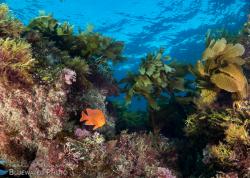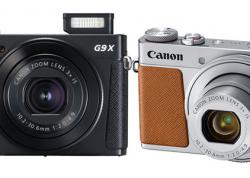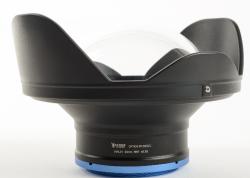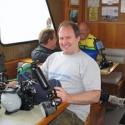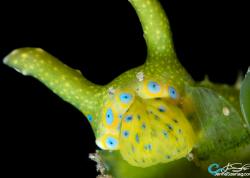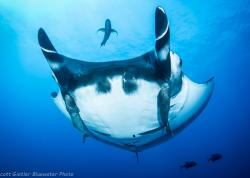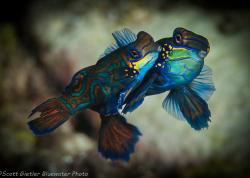Tokina 10-17mm Fisheye Lens Review
The tokina 10-17mm fisheye lens is a very popular lens, especially for underwater photography due to the flexibility it gives the underwater photographer. It is the #1 lens of choice for Canon and Nikon cropped-sensor underwater dSLR shooters.
The proper name for the lens is the Tokina AT-X DX 10-17mm F3.5-4.5 Fisheye. This is a variable aperture lens, and the largest aperture is F3.5 at 10mm focal length, and F4.5 at 17mm focal length.
You can also see all our lens reviews and comparisons: Lens Reviews for Underwater.
Lens Specifications:
I weighed the lens at 377 grams, with the cap.
Dimensions: 71mm x 70mm
Does not take filters
I measured the working distance at about 1 inch from the lens glass, very close!
Minimum aperture is F22 at 10mm and F29 at 17mm.
Diagonal angle of view is 180 at 10mm, 100 degrees at 17mm.
Comes in a Canon or Nikon mount.

The tokina 10-17mm fisheye lens is on the right, with the S&S zoom ring on. The nikon 10.5mm fisheye is on the left.


Tokina 10-17mm example photos
All photos taken on a tripod at F8. Interestingly, the Tokina gave a 1/3 stop brighter exposure than the sigma 10-20mm at the same settings. Note that at the same focal length, the tokina and sigma lens have the same magnification in the center of the photo, but not as you move towards the edges.

Tokina 10-17mm fisheye lens at 17mm

Tokina 10-17mm lens at 10mm

Comparison with a non-fisheye lens, the Sigma 10-20mm
These photos were taken with a tripod in the same position as the above photos, at F8

Sigma 10-20mm lens at 10mm

Sigma 10-20mm lens at 20mm

Sigma 10-20mm lens at 10mm
Underwater Performance of the Tokina 10-17mm
This lens performs well behind small and large dome ports. Stopping down the lens to F8 or F11 will usually give best results in the corners, especially in a smaller dome port. Most dome ports will benefit from a small 20mm extension ring to get the nodal point lined up with the housing correctly, although the ring is optional with larger dome ports.
Because the Tokina 10-17mm is so wide, best results are with at least 2 strobes. Be sure to bring the strobes back far behind the housing to avoid hot spots and glare in the corners of the photos, especially when shooting at 10mm focal length. You can see my strobe position diagrams.
The tokina 10-17mm photographs will really shine in clear water, when the subject is about 12 inches from the dome port and properly exposed.
When zoomed into 17mm, this lens excels at taking close-focus macro photographs. In this technique, the subject is almost touching the dome port, allowing a macro subject to be portrayed with a wide-angle view in the background.
If you want to use filters with natural light shots, this lens has no filter holder like the Nikon 10.5mm has, but there are instructions showing how best to attach a filter here.
Tests with different Dome Ports
I did some extensive pool tests with this lens, with 3 different Sea & Sea dome ports at different apertures, you can read about a summary of my sea & sea dome port tests.
Zoom Rings
I use the Sea & Sea zoom ring for the Canon 16-35mm F2.8L lens. It's slightly too big, but putting one strip of the included black tape around the lens allows the zoom ring to fit well. Without the strip, the zoom ring can fall off easily and can scratch the inside of your dome port during a dive, so be careful.
Comparison to other fisheye lenses
For many dSLR photographers, this lens replaced their Nikon 10.5mm and Sigma 15mm or Nikon 16mm lenses. Although the 10-17mm lens is a sharp lens, the prime lenses can produce even better image quality and some professionals still use prime lenses.
Tokina 10-17mm on a full-frame dSLR
Full-frame shooters usually use a prime fisheye lens like a Sigma 15mm, or a fisheye with a teleconverter, but some full-frame shooters do use the Tokina 10-17mm with a 1.4x teleconverter to gain the flexibility they had when using a cropped-sensor camera. However, using the Tokina on a full-frame camera can give surprisely good results - read our Tokina 10-17mm and Sigma on a full-frame camera article.
You can also see some amazing photos taken with the Tokina 10-17mm fisheye and Canon 5D Mark III camera.
Tokina 10-17mm underwater photos
Manta ray in Bali at 10mm, F7

Reef scene at Catalina Island at 12mm, F9

Barracuda in Bali, 14mm, F11


Tokina 10-17mm lens at 17mm, F13. this is a macro wide-angle photograph, the dome is almost touching the small featherduster worm.

Nudibranch and diver, Catalina Island. Tokina 10-17mm at 17mm, very close to the nudibranch. F10, 1/125th, ISO 200, 6-inch dome port. A larger dome port and a smaller aperture would have made the diver more in focus, but I like the feel of the photo the way it is.


Further Reading
RECOMMENDED ARTICLES
SUPPORT THE UNDERWATER PHOTOGRAPHY GUIDE:
The Best Service & Prices on u/w Photo Gear
 Visit Bluewater Photo & Video for all your underwater photography and video gear. Click, or call the team at (310) 633-5052 for expert advice!
Visit Bluewater Photo & Video for all your underwater photography and video gear. Click, or call the team at (310) 633-5052 for expert advice!
The Best Pricing, Service & Expert Advice to Book your Dive Trips
 Bluewater Travel is your full-service scuba travel agency. Let our expert advisers plan and book your next dive vacation. Run by divers, for divers.
Bluewater Travel is your full-service scuba travel agency. Let our expert advisers plan and book your next dive vacation. Run by divers, for divers.





